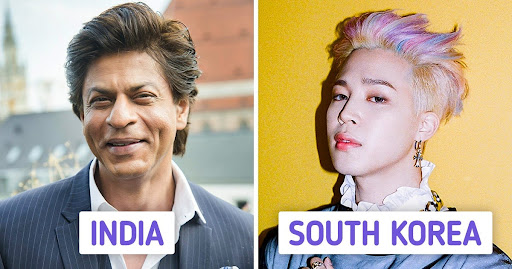Beauty standards vary significantly across different countries, shaping the ideal image of attractiveness for men. These standards encompass a range of factors, including physical appearance, grooming practices, and cultural influences. Understanding and exploring these diverse beauty ideals can provide insights into societal norms, expectations, and the impact they have on men’s self-perception and well-being. In this article, we will delve into the men’s beauty standards prevalent in various countries around the world, highlighting the unique perspectives and ideals that shape them.
1. South Korea:
In South Korea, a fair complexion, well-groomed eyebrows, and a slim physique are highly valued. Men invest significant effort into their skincare routine, with clear and blemish-free skin being a priority. Additionally, a V-shaped face with a sharp jawline is considered desirable. K-pop idols have played a significant role in popularizing these beauty standards, leading to an increased demand for cosmetic procedures such as double eyelid surgery and facial contouring among Korean men.
2. Brazil:
Brazil celebrates masculinity with an emphasis on a toned and muscular physique. The ideal Brazilian man is often associated with athleticism and a fit body. Grooming practices like waxing and body hair removal are prevalent, with smooth and hairless skin being desired. Tanned skin is also considered attractive, reflecting the country’s beach culture. Brazil’s beauty standards for men align closely with the values of physical health and vitality.
3. India:
In India, fair skin has traditionally been associated with beauty for both men and women. However, there is a growing movement challenging these colorist beauty standards, promoting inclusivity and acceptance of diverse skin tones. Well-groomed facial hair, such as a well-maintained beard or mustache, is often admired. Additionally, a fit and healthy physique is becoming increasingly valued, with gyms and fitness culture gaining popularity among Indian men.
Also Read: Handsome Men Unveiled: Asia’s 10 Most Dashing Men
4. Japan:
Japan places importance on a clean and neat appearance for men. The ideal Japanese man is often depicted with a slim figure, minimal body hair, and youthful features. Skincare is a significant aspect of beauty routines, with a focus on clear and luminous skin. Traditional hairstyles, such as the “samurai” topknot, have historical associations with masculinity and are still revered. While conformity to societal norms is prevalent, there is also a growing trend towards individual expression and embracing unique styles.
5. United States:
Beauty standards for men in the United States encompass a range of diverse ideals influenced by cultural, racial, and regional factors. The country celebrates various body types, from lean and muscular to more robust and athletic builds. Facial hair trends fluctuate, with styles like the clean-shaven look or well-groomed beards gaining popularity at different times. There is an increasing emphasis on skincare and grooming routines, highlighting the importance of self-care and personal presentation.
6. Sweden:
Sweden emphasizes a natural and minimalist approach to beauty for men. The ideal Swedish man is often associated with a healthy and fit physique, complemented by a fresh-faced and effortlessly groomed appearance. Maintaining good overall hygiene is essential, with an emphasis on clean and well-kept hair, nails, and skin. The concept of “lagom,” meaning balance and moderation, resonates with Swedish beauty standards, promoting a harmonious and understated look.
Conclusion:
Men’s beauty standards vary significantly across different countries, reflecting the cultural, historical, and societal influences specific to each region. From South Korea’s pursuit of flawless skin to Brazil’s celebration of a muscular physique, these standards shape perceptions of attractiveness and impact men’s self-perception. It is important to recognize and respect the diverse beauty ideals that exist globally, promoting inclusivity and challenging narrow definitions of beauty. By understanding these varied standards, we can appreciate beauty in all its forms and encourage positive body image and self-acceptance for men worldwide.
